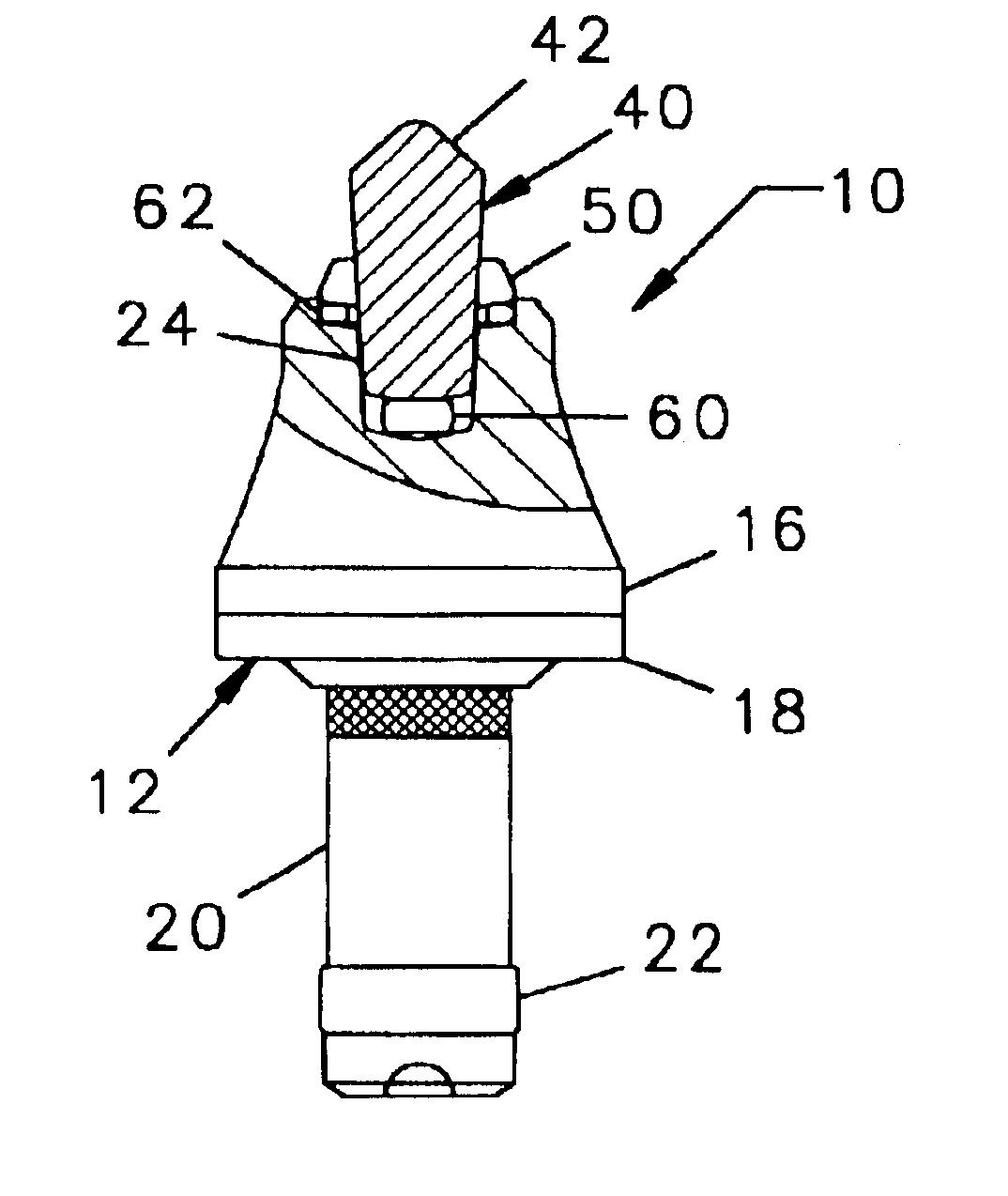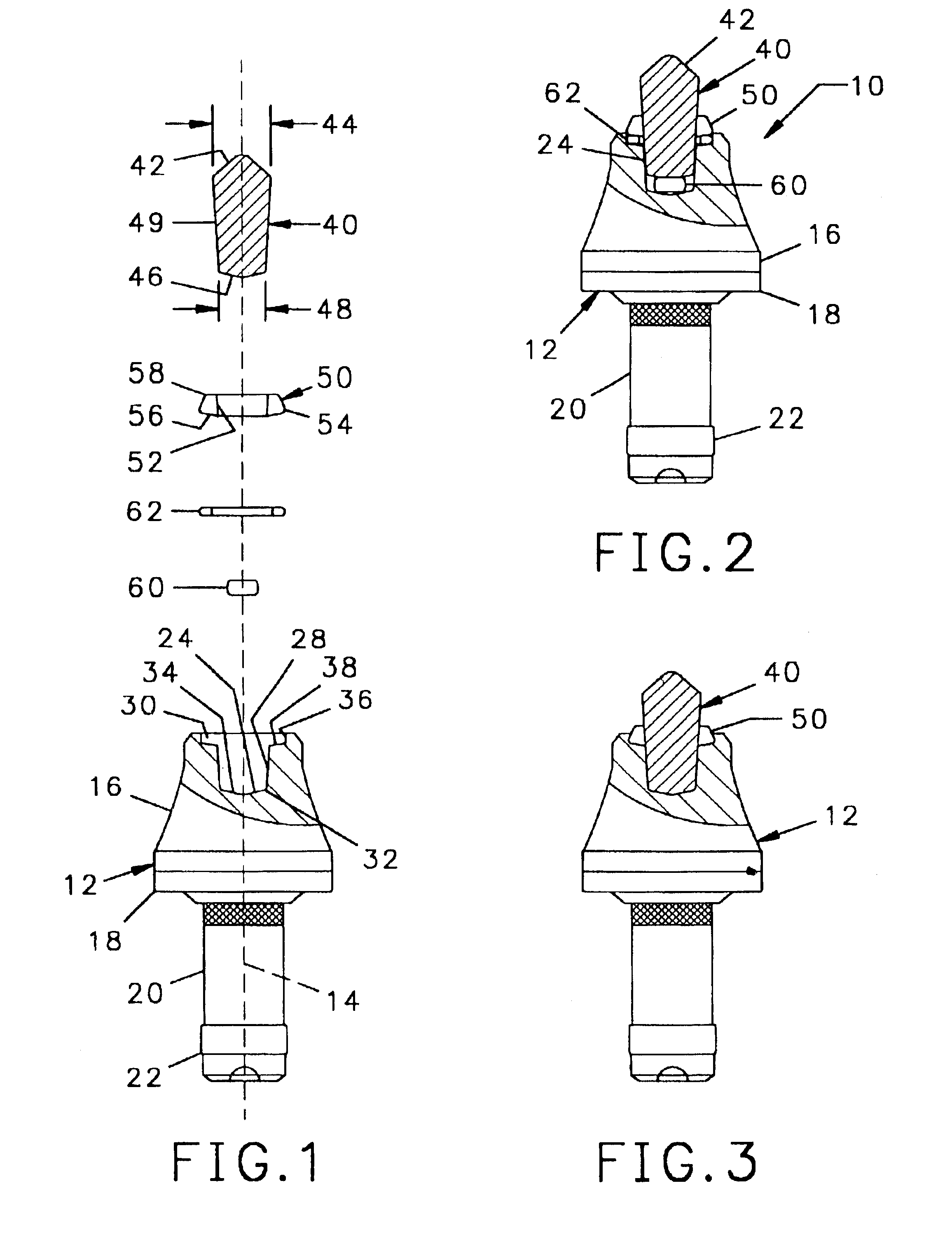Reverse taper cutting tip with a collar
a cutting tip and taper technology, applied in cutting machines, cutting machines, manufacturing tools, etc., can solve the problems of reducing the efficiency of the machine, reducing affecting the service life of the machine, so as to reduce the potential for breakage and prolong the useful life of the tool
- Summary
- Abstract
- Description
- Claims
- Application Information
AI Technical Summary
Benefits of technology
Problems solved by technology
Method used
Image
Examples
Embodiment Construction
Referring to FIGS. 1, 2 and 3, a tool 10 has an elongated body 12 symmetrical about its longitudinal axis 14. The tool includes a tapered forward section 16, at the rearward end of which is a radial flange 18. Extending axially rearward of the flange 18 is a cylindrical shank 20 at the distal end of which is a cylindrical hub 22. At the forward end of the forward section 16 is a seat 24 into which is brazed a cutting insert 26.
In accordance with the invention the seat 24 has a frustoconical central portion 28 with a large diameter forward end 30 and a smaller diameter lower end 32. At the bottom of the central portion 28 is a conical floor 34. Extending around the large diameter forward end 30 is a countersink portion consisting of a cylindrical inner wall 36 having a diameter considerably larger than that of the large diameter forward end 30, and a generally planer annular shoulder 38 between the rearward end of the cylindrical wall 36 and the large diameter forward end 30 of the f...
PUM
| Property | Measurement | Unit |
|---|---|---|
| base diameter | aaaaa | aaaaa |
| outer diameter | aaaaa | aaaaa |
| diameter | aaaaa | aaaaa |
Abstract
Description
Claims
Application Information
 Login to View More
Login to View More - R&D
- Intellectual Property
- Life Sciences
- Materials
- Tech Scout
- Unparalleled Data Quality
- Higher Quality Content
- 60% Fewer Hallucinations
Browse by: Latest US Patents, China's latest patents, Technical Efficacy Thesaurus, Application Domain, Technology Topic, Popular Technical Reports.
© 2025 PatSnap. All rights reserved.Legal|Privacy policy|Modern Slavery Act Transparency Statement|Sitemap|About US| Contact US: help@patsnap.com


